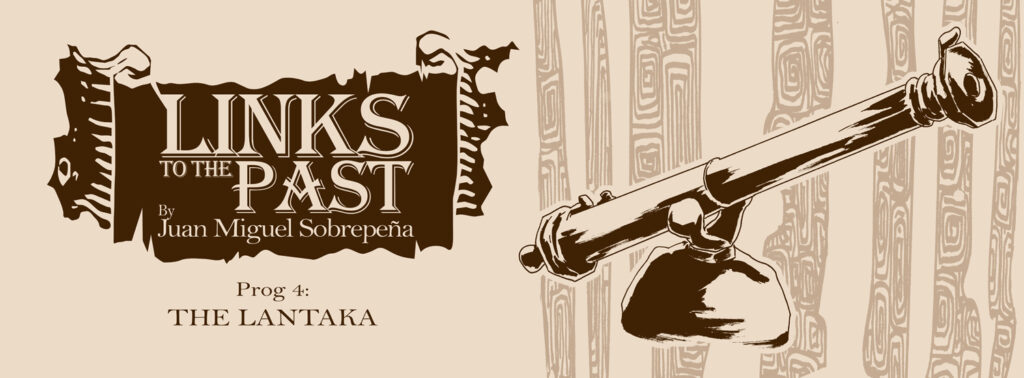Prog 4: THE LANTAKA
![]()

War – it has been a part of the human struggle since time immemorial, and nearly every civilization of man has been shaped by the bloody struggle of violent and unforgiving warfare. And along the entire history of human warfare, not many types of weaponry have had the enormous effect that projectile firearms have had, transforming it from the ancient method of face-to-face melees to the modern “hide and seek” variation that we see today. The kingdoms that came before the Philippines were no strangers to the horrors of war – having waged it against each other, then being invaded and united by foreign powers, then eventually being immersed in the Asian theater of the Second World War, and more.
It may surprise some readers to know that our people had used an early firearm known as the “lantaka” as early as the 15th century, the result of a diaspora of bronze-smiths originating from the declining Majapahit Empire (recorded as the first users of breech-loaded cannons known as “cetbang”, traced all the way back to the late 13th century). The lantaka was a small bronze cannon on a swivel that could be mounted on boats or on walls to help defend against raids. Filipino martial prowess is commonly attributed to blade wielding techniques, there being many different types of daggers and swords (kampilan, kris, etc), but there lies plenty of evidence supporting the idea that ancient “Filipinos” had begun exploring the use of gunpowder to make some of the earliest forms of projectile weaponry. This is an important fact to take note of because of the common misconception about pre-Spanish times that our predecessors were not much more than primitive tribesmen that were averse to technological progress.
Another important contribution of the discovery of lantaka cannons in the Philippines is that it can be considered proof of a link between our predecessors and that of some progenitor cultures of Malaysia and Indonesia, including the Melaka and Pahang Sultanates (who called it a “lela” or “rentaka”) as well as the previously mentioned Majapahit Empire. Gunpowder technology was spread to the island of Java in modern day Indonesia by way of a Yuan Dynasty invasion mounted by Kublai Khan in the year 1293 – which eventually led to the development and widespread use of bronze swivel cannons all over the Nusantara Archipelago. Although the very nature of archipelagos is that land masses (and the people that inhabit them) are separated by vast stretches of ocean, the remaining lantakas in existence do serve as tangible links to the past between us and our Malay and Indonesian cousins.
